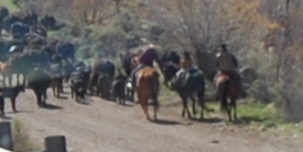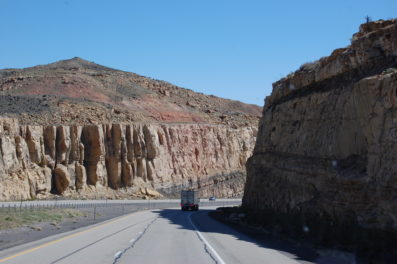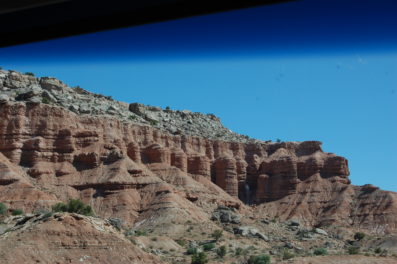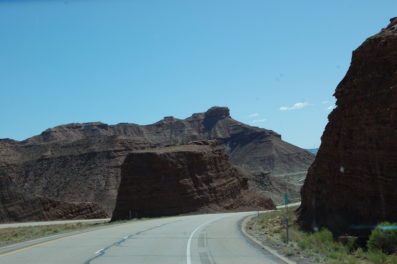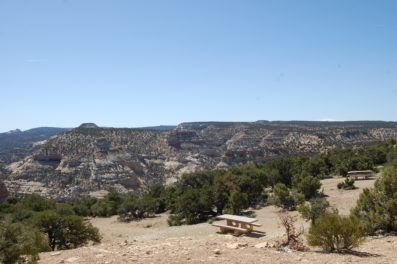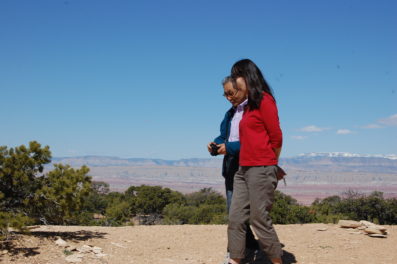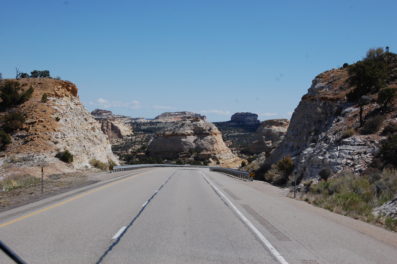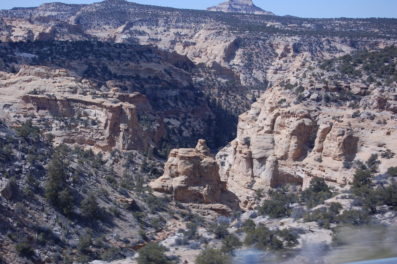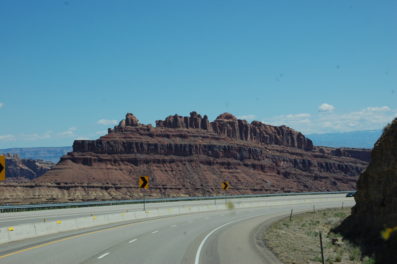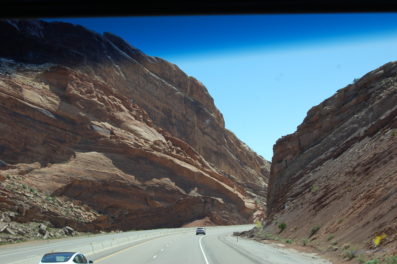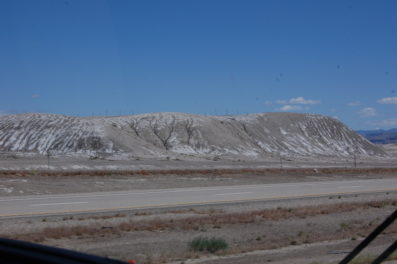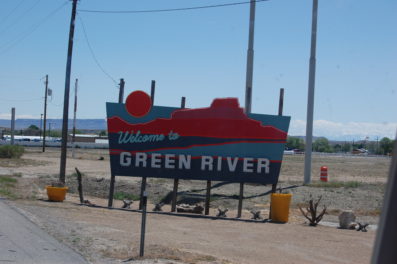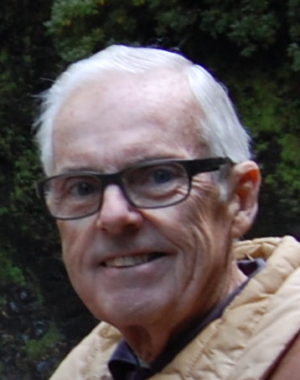
Please take the time to leave a comment at the bottom of this blog. I relish the positive ones and will learn from the negative ones.
.
HAPPINESS is to have EVERYTHING you NEED,
NOT the NEED to have EVERYTHING.
.
March/April ITENERARY
May 2nd Green River, UT at KOA Campground x4 nights (159m)
May 6th Heber, UT Mountain Valley RVR (2 layovers) x7n (234m)
May 16th Bend, OR TT (Overnights and stays TBD) x7n (654m)
June 5th Whaler’s Rest in Newport, OR.
June 26th leave Whaler’s Rest
*****************************************
5.02.19-Tripping to Green River, UT
It isn’t very clear in the picture above, since I’m utilizing the poor-man’s telephoto lens by cropping the original picture. This is a “serious” cattle round-up of several hundred head of cattle. The purpose for the picture was the munchkin on the center horse. Boy or girl, not sure I was driving, but he/she could not have been older the ten…pretty awesome way to spend a day and possibly bonding with a parent. We were still passing cattle two miles from here. Sure beats watching grass grow.
This was on a plaque by, I think, the National Park Service (NPS),
posted at the scenic area stop.
“Humans have lived among these rocks and cliffs for longer than you can imagine. Archeological investigations conducted as part of the Interstate construction across the Swell during the 1970s and 1980s located over a hundred prehistoric sites.
The sites show that hundreds of generations of Native American peoples inhabited this rugged land for thousands of years and in all seasons. Archeologists explored sites from the early Archaic Period of hunting and gathering about 9,500 years ago, up to historic ranching sites of the early 20th Century. People survived by hunting and gathering until about the time of Christ., when small-scale agriculture, dependent on corn, beans, and squash, was adopted.
We’re at a Rest Area for a few minutes and I had the chilling moment that the coach quietly began rolling down this steep road. Just popping in the tire blocks to assure my “moment” never happens.
Archeological remains of these farmers, whom we call Fremonts, include small settlements of pit dwellings, granaries, outdoor shaded work areas, hearths, storage pits, and trash mounds. the earliest evidence of farming on the Swell dates to about A.D. 500 at the Confluence Site.
Scenes from the Rest Stop. Below was a father/daughter team viewing also. He was visiting from Tokyo…Awesome! Just checked, coach has not moved!
This site provided important insight into the transition from hunting and gathering to agriculture in the region, and predated previously known agricultural sites by 200 years. Bows and arrows and ceramics were the technological innovations of this time.
Remember the name of these guys in the center of the picture?
Yes! Hoodoos.
Researchers found Fremonts sites in the Ghost Rock area, a few miles east of here, which is an upland environment and not well suited for growing corn. Study of the sites told archeologists much about the Fremont way of life, which included hunting and gathering year-round and farming at lower elevations along riverbanks.
Scenic views like this one above and below appear every couple of miles. Below, I’m sure you’re saying, snow again! NO! That’s salt. I hope to have a separate blog on “salt” soon.
It was a little over two-hours to get here but the scenery was well worth it. We’re staying at the Shady Acres RVP in Green River. Green River, as far as I’m concerned, is an oxymoron. The river is a muddy brown color.
